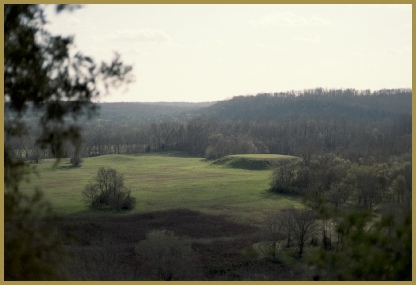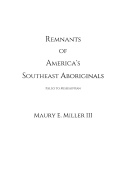









Remnants of America’s Southeast Aboriginals — Paleo to Mississippian is addressed to seasoned archaeologists, collectors, and those newly curious about the American Indian in the Southeast United States and their progression through Paleo, Archaic, Woodland, and Mississippian times. A book on the rich archaeological prehistory we have in the Southeast, there are well-
Remnants of America’s Southeast Aboriginals — Paleo to Mississippian is:
well laid out
well organized
user friendly
In Remnants of America’s Southeast Aboriginals — Paleo to Mississippian —
- Articles are of an easily readable length and are not chapters “continuing” one long story; the length of the book is not overpowering
- The color photos and layout of the book draw the interest of the potential reader to pick it up
- It shows a good representation of each of the time periods, Paleo to Mississippian
- It is “user friendly” with photos scattered throughout the book — not grouped together in a separate photo section
There are several firsts in this book.
- First time Mound Bottom in Cheatham County, Middle Tennessee, has been pictured in a color plate on the front of a book.
- First time showing a new illustration of Chungke Players playing the game.
- First time the Red Seven has ever been photographed for a book. This is significant because access to view it is no longer allowed.
Following . . . Author Maury E. Miller III relates how Remnants of America’s Southeast Aboriginals — Paleo to Mississippian came to be written and describes some of the new information included in the book:
This book started as a series of lessons on archaeology, Paleo to Mississippian, for home schoolers. A version of the Paleo study was self-
Remnants of America’s Southeast Aboriginals, Paleo to Mississippian is divided into three parts:
Part One — Archaeological Progression Through the Centuries is in chronological sequence that covers the life, times, artifacts, and some brief introductions to prominent cultural centers of the different time periods. The idea is to engage the reader to do further study on their own in the area that interests them most.
Part Two — Scientific Evidence features articles I am pleased to have permission from their authors to include in my book. The A New Method of Dating: Infrared Laser Spectroscopy, by R. M. Gramley, describes a new technology invented by David Hunter Walley of Dorsey, MS, that accurately dates the age of an artifact and can also detect whether it is a fake or not by its tool marks and patina, ancient or recent. Another scientific article is Atlatl Weights, Function and Classification, by William R. (Atlatl Bob) Perkins, BPS Engineering, Manhatten, MT. It discusses the atlatl and banner stones, the reasons for the different banner shapes and how they were used in archaic/woodland times and even continue to be used in some areas today. Discovery of these articles resulted from a quest to find the most accurate method of dating and verifying artifacts and learning the real reason for the development of the atlatl and banners as they did. Another article, Aboriginal Chert Procurement: Cherts, Extraction Sites and Methods, includes many excerpts from the Masters Thesis of Ryan Parish at the University of Memphis who permitted me to use as many excerpts and photos from “A Chert Sourcing Study Using Visible/Near-
Part Three — Lessons Learned Along the Way, is a resource I have not seen in other books on antiquities, archaeological or otherwise. These articles come from a lifelong study of archaeology and the aboriginals and an insatiable quest for the truth. They cover topics that professional and amateur alike, new and longtime, need to know as they seek to study and collect artifacts.
The biggest reason for writing this book is to present the truth to the best of my ability about the Remnants of America’s Southeast Aboriginals, to dispel the myths, and to expose the forgeries so prevalent in many archaeological shows, museums, and books today. I want to bring to the populace an easy to read text that is technical, but not too technical, and yet very informative.
I also want to present color plates of aboriginal artifacts because individuals need to see the true color and texture of the artifacts. With the exception of the wolf medicine tubes pictured in this volume and one or two other photographs (all used with permission), all of the photographs are formerly unpublished. The photos picture a wide range of artifacts from each period and have descriptions of material, actual size, site, and how used, under most photos. The artifacts pictured are also not all “perfect” because the majority of active enthusiasts are not going to find “perfect” artifacts, but there are still lessons to be gleaned from imperfect artifacts. Photos of tools also inform collectors that they may be ignoring actual artifacts that are not “arrowheads.”
To my knowledge, after actively seeking to see if other such books on the topics presented exist, there is no other one volume that covers all these areas in a concise and easy to read text.
I have a lifelong passion for archaeology, history, and knowledge, and I enjoy sharing it with people in a way I hope they can understand and will be inspired to learn more.


